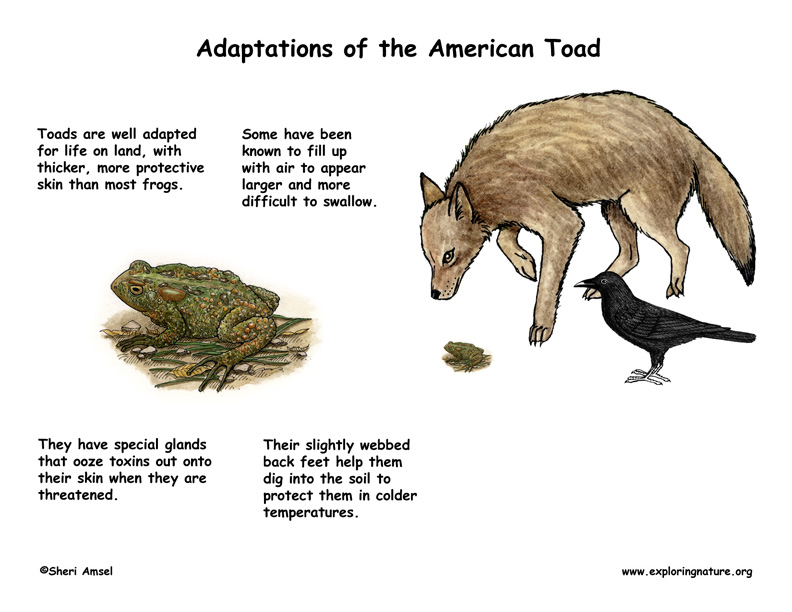

Adaptation in a population of living things happens as a result of an adaptive trait. This is any inheritable trait that increases its survival rate so that it can live longer, reproduce longer, and have more offspring (that also have that trait). Adaptive traits can improve an animal's ability to find food, make a safer home, escape predators, survive cold or heat or lack of water.
Toads are well adapted for life on land, with thicker, more protective skin than most frogs. Their slightly webbed back feet help them dig into the soil to protect them in colder temperatures. Because they spend their lives on land, they are less vulnerable to droughts, though they must have water for mating and laying their eggs. All of these physical adaptations help the toad survive in its habitat.
They are protected from predators by special glands that ooze toxins out onto their skin when they are threatened. Toads have been known to fill themselves up with air to appear larger and more difficult to swallow to predators. This behavioral adaptation caused a stir in Europe in 2005, when a flock of crows discovered that they could pop the toads with their beaks and eat their livers. Within a few days more than a 1,000 exploded toads were found in Germany and Denmark. This adaptive trait was suddenly not a protective adaptation any longer.
For Discussion and Critical Thinking:
The American toad has adaptive traits that help it to survive in its habitat.
1. Name two of the American toad’s physical adaptations and how they help it survive:
2. Name two of the American toad’s behavioral adaptations and how they help it survive predators and cold weather:
3. Why can the American toad survive droughts better than frogs?
When you research information you must cite the reference. Citing for websites is different from citing from books, magazines and periodicals. The style of citing shown here is from the MLA Style Citations (Modern Language Association).
When citing a WEBSITE the general format is as follows.
Author Last Name, First Name(s). "Title: Subtitle of Part of Web Page, if appropriate." Title: Subtitle: Section of Page if appropriate. Sponsoring/Publishing Agency, If Given. Additional significant descriptive information. Date of Electronic Publication or other Date, such as Last Updated. Day Month Year of access < URL >.
Amsel, Sheri. "Adaptations of the American Toad" Exploring Nature Educational Resource ©2005-2024. December 13, 2024
< http://www.exploringnature.org/db/view/Adaptations-of-the-American-Toad >

